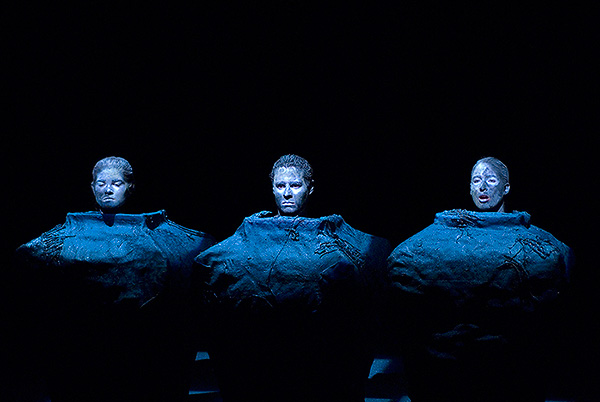* given its current model
Certain business models limit you to certain marketing approaches and certain marketing approaches limit your product development. In the case of Netflix, the company is locked into a strategy that effectively prevents it from developing a Sex and the City or Sopranos or Game of Thrones or even a
Fraggle Rock.
When HBO introduces and nurtures a major show, it starts with a standard advertising and PR campaign, then gives it a good prime time slot and rebroadcasts it repeatedly through the week. This last part is especially important because, even more than most non-rival goods, television series thrive on familiarity and heavy rotation. By airing Game of Thrones a half dozen times in a week, HBO greatly increases the chances that viewers who are curious or who are just channel surfing will get into the show. This also nicely complements social media. People who see friends talking about an episode have a chance to catch up before the next one airs (and, unlike with Netflix, being into an HBO show guarantees loyalty and regular viewing for at least three months, which gives the network ample opportunity to hook you another show which keeps the cycle going).
Netflix has a far narrower range of marketing options. It can pay directly for advertising and indirectly for PR, but that's about it. For all the talk of neo-programming, Netflix has few ways of getting customers to watch what they want them to watch.
Much has been made of recommendation model and it is a promising area for marketing research, but it occupies a somewhat different niche than lead-ins and surf-driven traffic and, more to the point, it is not a good fit with Netflix. Recommendations are most effective at introducing viewers to the unfamiliar, or, put another way, recommendations add more value to the unfamiliar. Someone who likes the remake of True Grit might be more likely to watch Gunsmoke or Sam Peckinpah's
the Westerner. Both were great shows, but CBS Television will charge you serious money to license Gunsmoke; whoever owns the Westerner would probably trade even for what's in your wallet. At the risk of belaboring the obvious, making viewers aware of a show they might like increases its value without increasing its cost.
Netflix has a strategy of maintaining a shallow catalog of familiar titles and focusing on a small number of highly publicized original productions. This is not a business plan that works well with recommendation-based promotion.
Between that and the well-established difficulty of launching a series, Netflix has no choice but to focus on shows that lend themselves to advertising and PR. Those generally breaks down to marketable names, properties or concepts. You can definitely see these groups in the two major and one borderline major launches we've seen from Netflix up until now:
House of Cards -- Kevin Spacey playing a Kevin Spacey character
Hemlock Grove -- Teen vampire/werewolf show from gore king Eli Roth
Arrested Development season 4 -- continuation of cult hit
(I went back and forth about including Lilyhammer, finally deciding not to because it was a co-production that debuted elsewhere and, more importantly, because it does not seem to represent the direction the company has now taken, which is unfortunate since Lilyhammer is, from a business standpoint, the most interesting thing Netflix has done for years.)
What are some of the concerns with limiting yourself high-profile, easily marketed journalist-bait?
Thin margins. You generally pay much more for stars and recognized properties (Spacey knows how much Spacey is worth).
The pool is limited and the process slow. Netflix talks about passing HBO. It took HBO about fifteen years to go from Phillip Marlowe to shows like Sex in the City and the Sopranos, longer still for Showtime to go from earnest efforts like the Paper Chase to hits like Dexter and Homeland. Does anyone think that Netflix can wait that long?
Established properties certainly reduce the chances of failure but there's reason to believe it may limit potential upside as well (see
here and
here for some thoughts on the relationship between hits and defying expectations). Between the star power, massive marketing blitz, first rate production values and the proven quality of the source material, I expect House of Cards to do reasonably well, but it's a hedged bet when the company needs a big pay-off.
Traditional marketing and, to a slightly lesser extent, automated recommendations, tend to work best on products that customers expect to like. Walk-ins and, to a lesser extent, social media recommendations work best on products that customers like more than they expected to. (Besides if you did want to maximize social media leverage, the Netflix episode dump strategy is probably the last thing you'd want to do.)
HBO has a long history of making hits out of shows with unlikely concepts ("It's about a family of undertakers...") and people you've never heard of ("James Gandol-who?"**). It was able to do this in part because the people who ran the network made good use of all of the good, old-fashioned tricks that programmers have used for decades.
Is it possible to duplicate HBO's success without using those tricks? Probably. Is it possible with the approach Netflix is trying. Almost certainly not. The marketing is badly thought-out, the pieces of the business plan don't fit and when it comes to producing original content, the company has a dearth of new ideas.
That said, I probably will probably check out House of Cards. Kevin Spacey, evil machinations... What's not to like? (other than the $100 million Netflix paid for it -- without even getting the syndication rights)
** No disrespect intended to James Gandolfini, who passed away recently, rather a reminder that David Chase and the executives at HBO were willing to go with a talented unknown who was right for the part.




